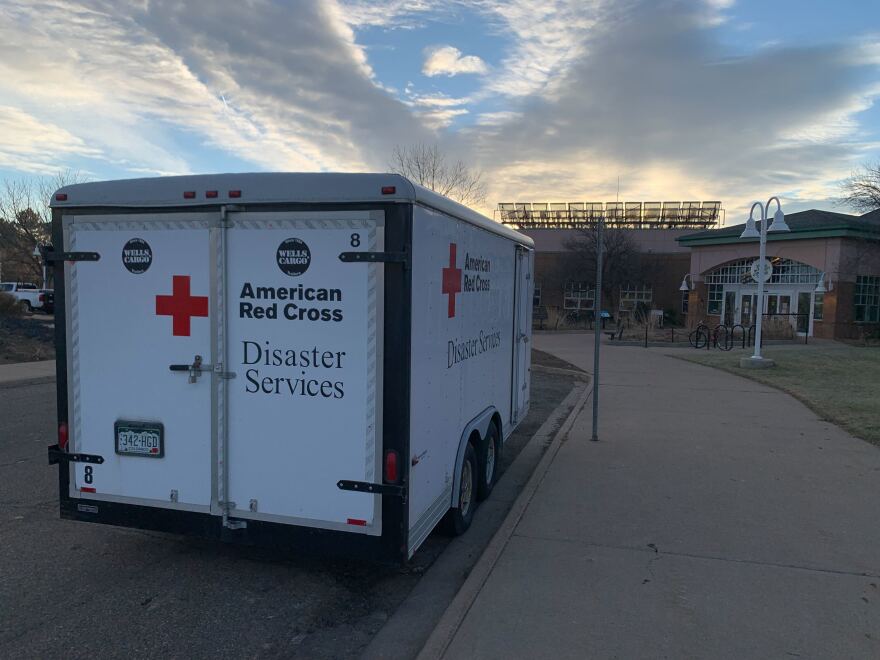The Sunshine Wildland fire has burned about 19 acres in the foothills near Boulder since it started Monday. Firefighters had achieved at least 40% containment on the blaze as of Tuesday morning.
A damage assessment from the Boulder Office of Emergency Management has confirmed one residence was destroyed by the fire on the 2900 block of Sunshine Canyon Drive. Another residence on Bristlecone Way sustained damage.
The fire prompted evacuation orders for hundreds of residents on Monday. The East Boulder Community Center was set up as an evacuation shelter and the Boulder County Fair Grounds provided shelter for large animals that needed to be evacuated. Both shelters are now deactivated as firefighters make progress on containing the blaze.
Windy conditions initially fueled the fire, but died down on Monday night, limiting its spread. Conditions are likely going to get worse again before they get better, according to National Weather Service meteorologist Russell Danielson.
“We will definitely have elevated fire weather conditions [Wednesday],” says Danielson. “Whether or not they get to the critical standpoint of where we would issue a Red Flag Warning is still in question.”
Danielson says the wind is expected to pick back up again, along with fairly warm temperatures. Conditions on Wednesday will be similar to the weather that initially spread the fire on Monday, including wind gusts of 40 to 50 miles per hour.
“We just have to make sure that everybody's being careful and not starting fires,” he says. “And if they do for some reason see smoke or a fire start, they are quick to report it to authorities.”
He also says fire-prone conditions at this time of year are becoming more frequent. High winds and a dry environment also fueled last winter’s Marshall Fire, which destroyed over 1,000 structures in Boulder.
Those conditions were much more severe than those currently on the Front Range, however. During the Marshall Fire, winds reached 90 to 100 miles per hour, almost double the speed of those that fuelled this week’s Sunshine Fire. Last winter also saw one of the latest snowfalls on record, which caused the environment to dry out even more.
This season, the region has experienced more snow, with more on the way. A cold front, commonly called an arctic blast, will reach the Northern Front Range by Thursday, bringing extremely cold temperatures and two to six inches of snow. The snow will bring some moisture to the environment and decrease the risk of wildfires.
“When we don't put that snow on the ground and don't put that moisture into the ground, a lot of things are able to dry out - all the shrubs, all the trees, just everything,” says Danielson.
He says temperatures later this week will drop down to dangerously cold levels. They could get below negative 20 degrees in parts of the Front Range and Easter Plains. Under those conditions, Danielson says it’s important to limit one’s time outside. He also says, after the cold front moves through, warm weather is on its way back for the Christmas weekend.





